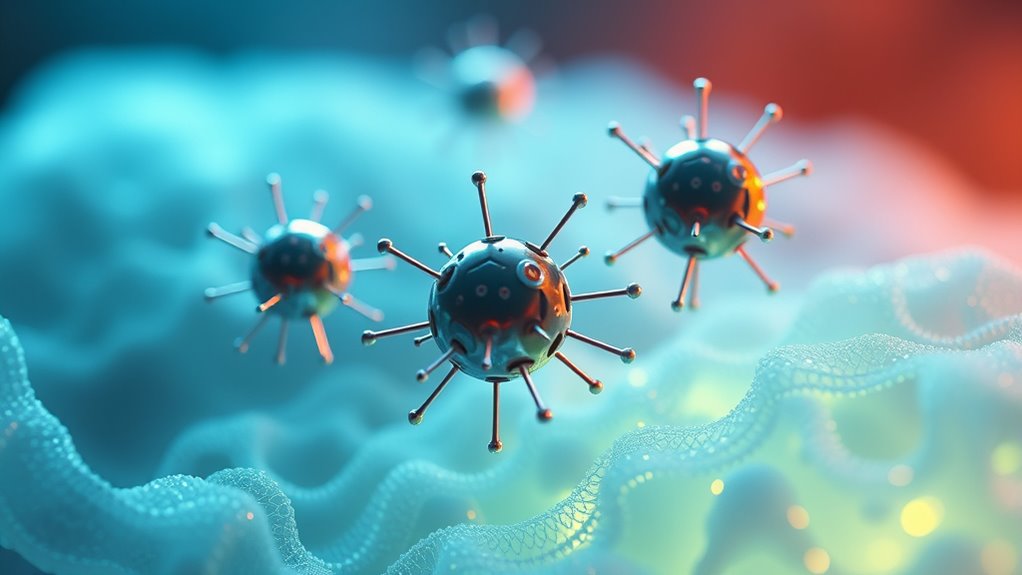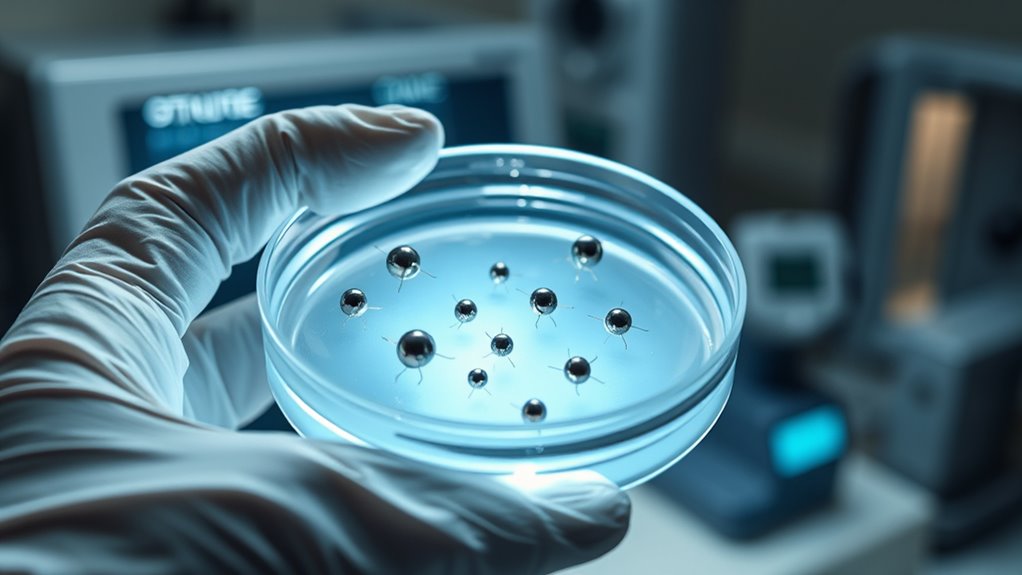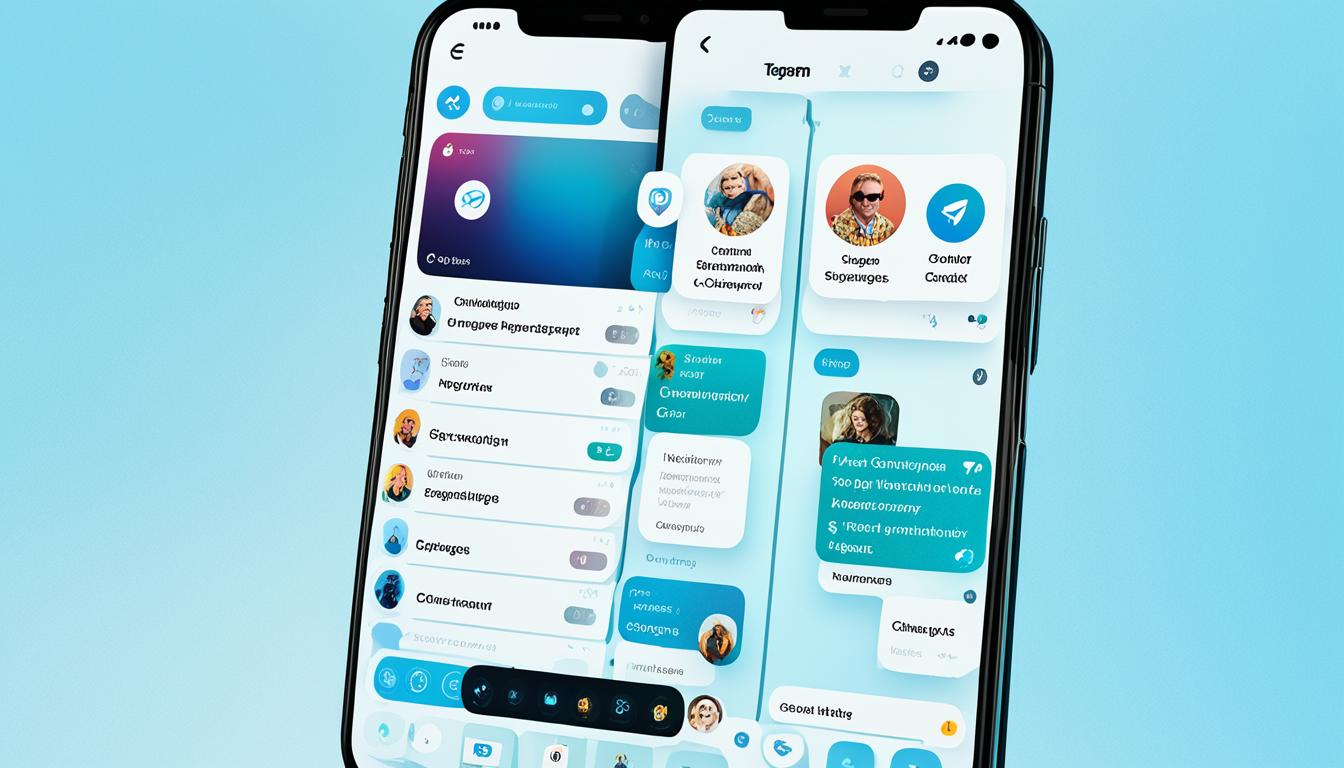Nanobots in medicine are real and advancing rapidly, with scientists making progress toward practical uses like targeted drug delivery and cellular repair. While some claims may seem like fiction, recent lab results show promising developments. These tiny machines could soon perform minimally invasive surgeries and treat diseases with high precision. If you keep exploring, you’ll discover how close we are to seeing nanobots transform healthcare and what challenges still lie ahead.
Key Takeaways
- Nanobots are tiny, programmable machines designed for precise tasks like drug delivery and tissue repair inside the human body.
- Current research is in experimental stages, focusing on safety, control, and biocompatibility for medical applications.
- Recent lab results demonstrate progress in nanobot mobility, targeting accuracy, and responsiveness to disease biomarkers.
- Major challenges include ensuring nanobot security, avoiding unintended effects, and developing reliable, safe control mechanisms.
- The latest developments suggest nanobots will revolutionize minimally invasive surgeries and personalized medicine in the near future.

Have you ever wondered how tiny machines could revolutionize healthcare? Nanobots are at the forefront of this exciting frontier, promising to transform the way we diagnose and treat diseases. These minuscule devices, often smaller than a human cell, are designed to perform specific tasks inside the body with incredible precision. In recent years, researchers have made strides toward harnessing nanobots for applications like robotic surgeries and targeted drug delivery. Imagine a tiny robot steering through your bloodstream, identifying cancer cells, and removing them without invasive procedures. That’s the future many scientists envision, and some lab results are bringing it closer to reality.
Tiny nanobots could soon revolutionize healthcare with precise, minimally invasive treatments inside the body.
In the domain of robotic surgeries, nanobots could serve as the ultimate surgical assistants. Unlike traditional surgeries that require large incisions and anesthesia, nanobots could operate internally, performing delicate procedures with minimal discomfort. For example, they could repair damaged blood vessels, clear clogged arteries, or even remove tumors at the cellular level. This approach would drastically reduce recovery times and minimize risks associated with invasive surgeries. Currently, robotic surgeries involve larger machines like the da Vinci Surgical System, which requires human surgeons to control instruments remotely. Nanobots could take this a step further by performing autonomous or semi-autonomous tasks inside your body, making surgeries less invasive and more precise. Advancements in nanotechnology continue to accelerate, bringing these futuristic solutions closer to everyday medical practice. Additionally, ongoing research emphasizes the importance of ensuring the security of nanobot operations to prevent unintended effects during procedures. As the field progresses, the development of biocompatible materials is crucial to ensure safety and functionality within the human body.
Targeted drug delivery stands as one of the most promising uses of nanobots. Instead of administering medication broadly, nanobots can be engineered to seek out specific cells or tissues, such as cancerous tumors. Once they locate their target, they release drugs directly where needed, maximizing effectiveness while minimizing side effects. This precision reduces the risk of damage to healthy tissue and enhances treatment outcomes. Lab experiments have shown that nanobots can be designed to recognize specific biomarkers — proteins or molecules associated with diseases — and respond accordingly. These advancements suggest that future treatments could be tailored to each patient’s unique condition, making therapies more personalized and effective. Vetted – Mother Baby Kids providers recognize that safety and efficacy are crucial in developing these technologies for clinical use. While the potential of nanobots in medicine is immense, it’s essential to recognize that many of these innovations are still in experimental stages. Researchers are working to improve the stability, control, and safety of nanobots before they become standard practice. Nonetheless, the progress made so far offers a glimpse into a future where tiny machines seamlessly operate within us, revolutionizing surgeries and drug delivery. If these developments continue, you could soon benefit from treatments that are faster, less invasive, and far more precise than anything available today. The era of nanobot medicine is on the horizon, and it promises to change healthcare in ways we’re only beginning to understand.
Frequently Asked Questions
How Soon Will Nanobots Be Available for Everyday Medical Use?
You’re probably wondering when nanobots will be available for everyday medical use. While nanobot manufacturing advances steadily, widespread patient acceptance is still developing. It could take several years before these devices become common, as safety, regulation, and ethical concerns need addressing. Stay optimistic; ongoing research is promising, but you’ll likely see nanobots in specialized treatments first, gradually expanding into routine healthcare as technology and acceptance grow.
Are There Any Health Risks Associated With Nanobot Deployment?
You might wonder about health risks from nanobot use. Currently, long-term toxicity and immune response are primary concerns, as researchers worry about unintended effects inside your body. While lab tests are promising, long-term studies are ongoing. It’s wise to stay informed about new findings, as safety protocols improve. For now, make certain you’re working with reputable medical providers and trusted technology before considering nanobot treatments.
What Are the Ethical Implications of Using Nanobots in Humans?
The ethical implications of using nanobots in humans are massive, like a thunderclap in a quiet room. You need to contemplate informed consent, ensuring patients understand risks and benefits. Privacy concerns are another big issue, as nanobots could access sensitive data or manipulate bodily functions. You must weigh these factors carefully, promoting transparency and respecting individual autonomy to prevent misuse or unintended consequences.
Can Nanobots Malfunction Inside the Human Body?
You might wonder if nanobots can malfunction inside your body. While they’re designed to perform specific tasks, nanobot malfunctions could occur due to technical glitches or unpredictable human body interactions. These malfunctions could lead to unintended effects, but researchers are working to mitigate such risks. Advances in nanotechnology aim to guarantee that nanobots operate safely within the human body, reducing the chances of harmful malfunctions during medical procedures.
How Much Will Nanobot Treatments Cost in the Near Future?
While nanobot manufacturing advances, predicting exact costs remains tricky, much like balancing innovation with affordability. You might expect treatments to become more accessible as technology progresses, but insurance coverage could still limit affordability for many. In the near future, nanobot treatments could cost thousands per session, depending on complexity and healthcare policies. You should keep an eye on evolving medical insurance plans and technological breakthroughs to better understand potential expenses.
Conclusion
As you explore nanobots in medicine, it’s clear they hold incredible potential. Imagine a future where a tiny robot detects and destroys cancer cells precisely, like a recent lab prototype successfully targeting tumors in mice. While challenges remain, ongoing research suggests real breakthroughs are on the horizon. So, stay curious—nanobots might soon revolutionize healthcare, making treatments more effective and less invasive than ever before.
Amina brings over a decade of journalism experience to her role as Editor-in-Chief. Under her leadership, Exquisite Post has flourished, maintaining the highest standards of integrity and excellence. Amina’s commitment to truth and her visionary approach guide the editorial team in producing impactful news stories that resonate with our audience.










